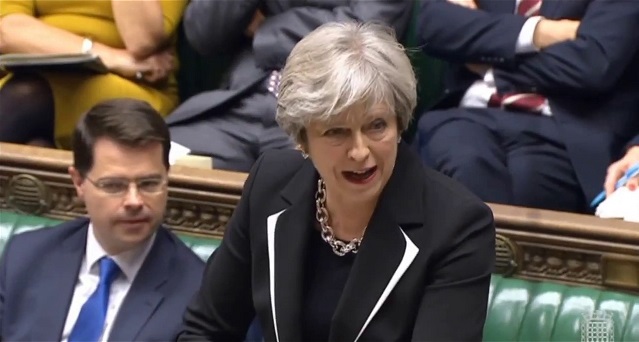
London, United Kingdom | AFP | British Prime Minister Theresa May presents her new approach to Brexit on Monday, following MPs’ crushing rejection of the divorce deal agreed with the EU.
Lawmakers have their chance to submit amendments, which could indicate whether opinion in parliament is shifting towards alternative routes.
Here are the four main scenarios now facing Britain while the clock ticks down to its scheduled departure from the European Union on March 29:
– Delay –
The flurry of amendments could indicate which options MPs want to rule out — but may not produce a majority for anything they do want to proceed with.
Amendments could seek to halt the Article 50 departure process — the two-year clock set ticking when Britain handed in its notice on March 29, 2017.
Brussels may not be so keen if the delay just means more months of political gridlock.
A further potential complication is that elections to the European Parliament elections due in late May and the new chamber is set to sit on July 2.
Some of Britain’s 73 seats have been reallocated to other countries.
– Try to get another deal –
After the deal agreed between May and Brussels was overwhelmingly rejected by MPs on Wednesday, May immediately began talks with opposition leaders, though main opposition Labour leader Jeremy Corbyn stayed away, insisting no-deal must be taken off the table as a pre-condition.
May will make a statement to parliament’s lower House of Commons on Monday, setting out a Plan B, and has said if necessary she will return to Brussels for talks with the EU.
But she has repeated that any deal must take Britain out of the EU, end uncontrolled EU migration and allow the country to sign independent trade deals.
The last two conditions would seem incompatible with continued membership of the EU’s single market and a customs union, advocated by Labour.
EU leaders have said they are willing to negotiate further but have repeatedly said they do not want to reopen the Brexit deal agreed with May.
– No deal –
Britain is legally on track to leave the EU with or without a deal on March 29, unless it delays or stops the process.
A no-deal scenario threatens to trigger a recession in Britain and markedly slow the EU’s economic growth, as well as causing significant legal disruption.
The world’s fifth-biggest economy could lose preferential access to its largest export market overnight, affecting every sector, leading to rising costs and disruption at British ports.
The government has conducted visible displays of its ramped-up no-deal preparations over the past few weeks.
There is growing speculation in London and Brussels that it could seek to delay Brexit to avoid this scenario, although May has denied this.
– Second referendum –
EU supporters have been calling for another vote ever since the Leave campaign won by 52 to 48 percent in the 2016 referendum, and demands have stepped up in recent months.
There is no law keeping Britain from doing it all over again, but many question whether this would be democratic — or resolve anything.
May has warned another vote “would do irreparable damage to the integrity of our politics”.
It also threatens to be just as divisive, with opinion polls showing the country is still split over the issue.
A majority of MPs would have to support the idea and pass a law to hold the referendum, which would likely result in Brexit being delayed while the process took place.
 The Independent Uganda: You get the Truth we Pay the Price
The Independent Uganda: You get the Truth we Pay the Price



